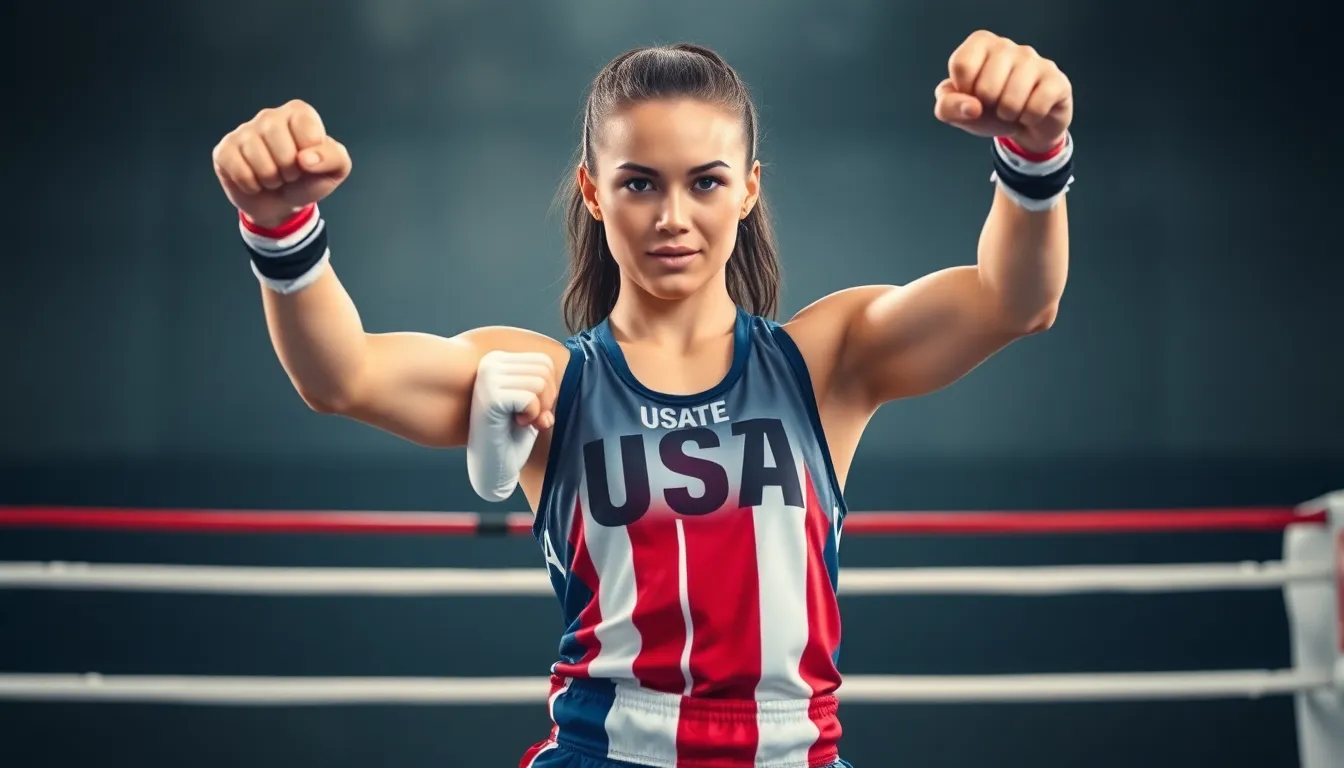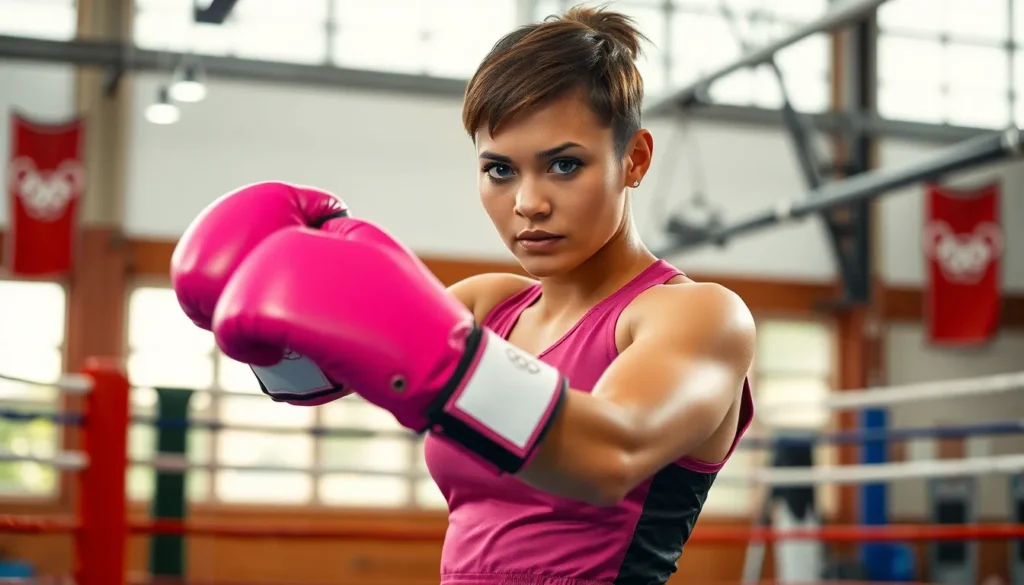Table of Contents
ToggleThe world of sports often intersects with complex discussions about identity and gender. In recent years, the question of whether an Olympic boxer was born a man has sparked intense debate and scrutiny. This topic not only challenges traditional views of gender in athletics but also raises critical questions about fairness, inclusion, and the evolving landscape of competitive sports.
As society grapples with these issues, the story of this boxer serves as a focal point for broader conversations about what it means to compete at the highest levels. With the Olympics being a pinnacle of achievement, understanding the nuances surrounding gender identity in sports becomes essential. This exploration delves into the implications of such identities in the realm of boxing and beyond, inviting readers to consider the evolving definitions of athlete and competition.
Overview of the Controversy
The controversy surrounding the Olympic boxer centers on the impact of gender identity in competitive sports. Debates arise from whether an athlete, assigned male at birth yet identifying as female, should compete in women’s categories. Opponents argue that this creates an unfair advantage, citing physiological differences such as muscle mass and testosterone levels. Supporters emphasize the importance of inclusivity and the right to compete according to one’s gender identity.
Numerous governing bodies in sports have developed policies to address these issues. For example, the International Olympic Committee (IOC) implemented guidelines in 2015, allowing transgender athletes to compete with some restrictions. These guidelines aim to balance fairness and inclusion but continue to draw criticism from various factions within the sports community.
Research indicates a growing acknowledgment of gender diversity among athletes. Events in various sports now showcase competitors who challenge traditional gender norms, reflecting society’s evolving views. This broader acceptance ignites discussions about the definitions and classifications of athletes, further fueling the controversy.
The boxer’s situation exemplifies a microcosm of the larger debate on gender and athletics. While some advocate for stricter regulations, others highlight the necessity for reform to accommodate diverse identities in sports.
Background on Transgender Athletes

Transgender athletes represent a significant segment of discussions surrounding gender and sports. Their participation raises important questions regarding regulations, inclusion, and competitive fairness.
Definition of Transgender
Transgender individuals experience a discrepancy between their assigned sex at birth and their identified gender. This identity encompasses a range of expressions, including those identifying as male, female, or non-binary. Understanding transgender identities is crucial for addressing their needs in sports environments and formulating equitable participation policies.
History of Transgender Participation in Sports
The inclusion of transgender athletes in competitive sports has evolved over decades. Early instances of recognized transgender athletes surfaced in the late 20th century, often amid societal and institutional pushback.
In 2004, the International Olympic Committee (IOC) first established guidelines permitting transgender athletes to compete in their identified gender categories, provided they underwent gender-affirming surgery or hormone therapy for a specified period. Over time, these guidelines have evolved to improve accessibility and inclusivity, reflecting growing awareness of gender diversity. Various sports organizations now implement policies that recognize and support transgender athletes, though disparities in these regulations persist.
Recent years have seen an increase in visibility for transgender athletes, with events showcasing their participation and contributions to sports. High-profile cases, like that of former athlete Caitlyn Jenner, have encouraged broader discussions on inclusivity. Nonetheless, challenges and debates regarding fairness and equal opportunity continue to shape the landscape for transgender individuals in sports.
The Case of the Olympic Boxer
The story of the Olympic boxer raises crucial questions regarding gender identity and athletics. This section explores her early life and subsequent achievements in the ring.
Early Life and Background
The boxer, assigned male at birth, experienced a profound journey in understanding her gender identity. Growing up, she faced societal norms and expectations that often clashed with her sense of self. Throughout her childhood, she engaged in various sports, showing promise and talent. Her transition involved not only personal exploration but also significant challenges, including support from family and allies. This journey set the foundation for her future in competitive boxing, as she embraced her identity and sought opportunities in her chosen sport.
Olympic Career and Achievements
Competing as a female athlete, she made history by qualifying for the Olympics, where she showcased her skills against formidable opponents. Her training regimen encompassed rigorous workouts, strategy development, and mental preparation. Notably, she earned multiple accolades, including national championships and recognition on international platforms. Her participation sparked conversations about inclusivity and fairness in sports, highlighting her role as a trailblazer for future generations of athletes navigating complex identities. These accomplishments underscore not only her dedication but also the ongoing evolution of gender representation in competitive boxing.
Gender Identity and Eligibility
Gender identity plays a crucial role in determining eligibility for participation in competitive sports. Various policies and considerations impact how athletes are classified and the ongoing debates surrounding fairness and inclusivity.
Policies of Sports Organizations
Sports organizations implement specific policies to address the participation of transgender athletes. The International Olympic Committee (IOC) guidelines require transgender women to maintain testosterone levels below a certain threshold for at least 12 months prior to competition. This policy aims to level the playing field while acknowledging gender identity. Other organizations, such as USA Boxing, follow similar frameworks, focusing on inclusivity while considering physical advantages. Despite these guidelines, some critics argue that they inadequately address biological differences. Yet, supporters insist these measures are necessary to uphold the rights of all athletes and promote equitable competition.
Legal and Ethical Considerations
Legal frameworks and ethical considerations significantly influence the discussion around gender identity in sports. Courts in various jurisdictions often address cases involving transgender athletes, determining the balance between non-discrimination policies and the integrity of competition. Ethical questions arise concerning the fairness of allowing athletes assigned male at birth to compete in women’s categories, with debates focusing on advantages linked to physical attributes. Organizations strive to navigate these complex legal landscapes while advocating for inclusivity, illustrating the ongoing tension between individual rights and fairness in sports.
Public Reactions and Media Coverage
Public reactions to the Olympic boxer’s story have sparked intense discussions across various platforms. Opinion pieces, social media discussions, and news articles reflect a range of perspectives. Supporters advocate for her right to compete based on her gender identity, emphasizing equality and representation in sports. Critics argue that allowing her to compete in women’s categories undermines fairness due to physiological differences associated with male puberty.
Media coverage has played a significant role in shaping public perception. Outlets frequently highlight both sides of the debate, featuring interviews with advocates and opponents. Articles often cite expert opinions from sports scientists and gender studies scholars to offer insights into the complexities surrounding transgender athletes’ participation in competitive sports.
Major sports networks and news organizations host panel discussions that involve journalists, athletes, and activists, providing a platform for diverse viewpoints. These discussions frequently focus on the implications of gender identity in athletics and the evolving policies surrounding inclusion.
Social media platforms serve as a battleground for opinions, with hashtags promoting inclusivity and fairness trending among supporters and critics. User-generated content often showcases personal stories from transgender athletes, contributing to a broader understanding of the challenges faced by individuals in similar situations.
Public demonstrations and advocacy campaigns have emerged in response to the ongoing debate. Protests and rallies aim to raise awareness of transgender rights in sports, encouraging participation and visibility. This grassroots activism complements mainstream media coverage and invites more comprehensive discussions on gender identity and equality in athletics.
The journey of the Olympic boxer highlights the complexities surrounding gender identity in sports. Her achievements challenge traditional notions of gender and push for a broader understanding of inclusivity. As conversations around fairness and representation continue to evolve, her story serves as a powerful reminder of the importance of recognizing diverse identities within athletics.
The ongoing debate reflects a pivotal moment in sports history, where organizations strive to balance inclusion with competitive integrity. Ultimately, the boxer’s legacy may inspire future generations to advocate for their rights and redefine what it means to be an athlete in a rapidly changing world.




